Surface Area and Volume of Arbitrary 3D Geometry
Download: area.zip, volume.zip
- Surface Area of Triangle
- Surface Area of 3D Geometry
- Approximation Error
- Volume of Terahedron
- Volume of 3D Geometry
- Example
Surface Area of a Triangle
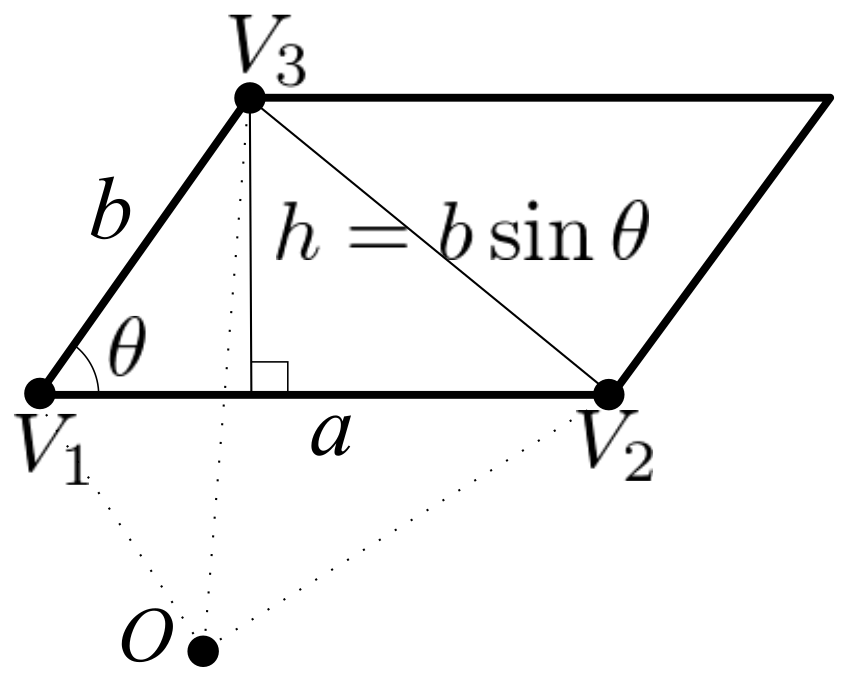
Suppose there is a single triangle V1-V2-V3 in a 3D space. The surface area of this triangle is a half of the parallelogram constructed by V1, V2 and V3.
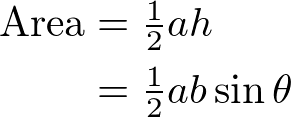
where a is the length of V1-V2, and b is the length of V1-V3.
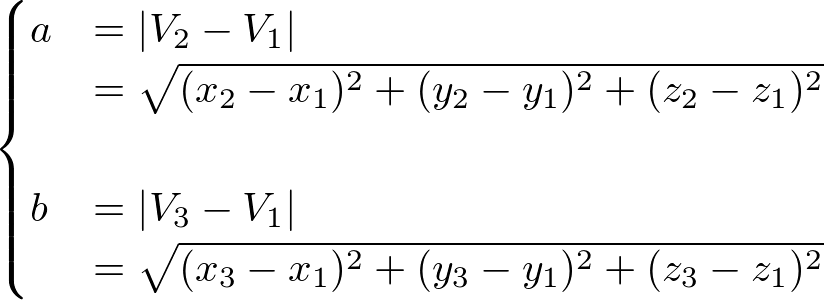
So, you can get the area by performing 2 square roots and sine function. But, there is a simpler formula using the cross product of 2 vectors.
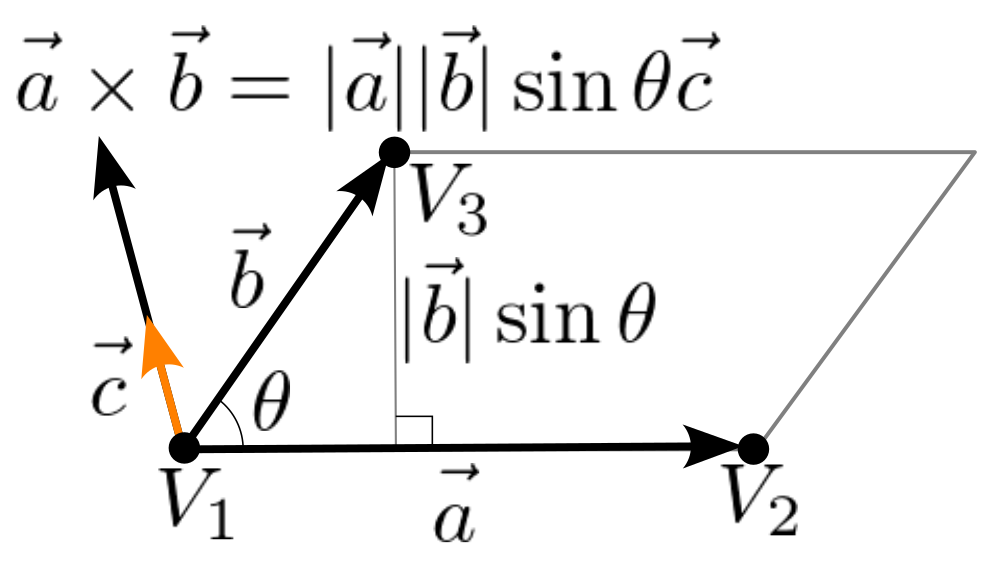
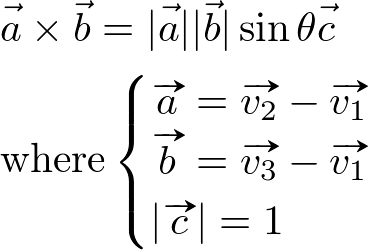
By definition of cross product, the magnitude of the cross product ![]() is equal to the area of parallelogram constructing 2 vectors.
is equal to the area of parallelogram constructing 2 vectors.
![]()
The cross product is decomposed to a sum of 3 bases vectors and it's magnitude is

Therefore, the area of the triangle is a half of the parallelogram's area, which is the magnitude of the cross product.

Surface Area of 3D Geometry
If an arbitrary 3D geomery is triangulated, the surface areas of the geometry is the sum of area of all triangles constructing the geomery.
If a geomery consists of N triangles, the total surface area is;

Here is C++ code snippet to compute the surface area of 3D geometry. The input parameters are an array of vertices, an array of indices and the number of indices for the geometry. See more detail in geomUtils.cpp file.
// calculate area of a single triangle
double computeTriangleArea(float v1[3], float v2[3], float v3[3])
{
float v12[3]; // v2 - v1
v12[0] = v2[0] - v1[0];
v12[1] = v2[1] - v1[1];
v12[2] = v2[2] - v1[2];
float v13[3]; // v3 - v1
v13[0] = v3[0] - v1[0];
v13[1] = v3[1] - v1[1];
v13[2] = v3[2] - v1[2];
// v12 * v13 (cross product)
double cross[3];
cross[0] = v12[1]*v13[2] - v13[1]*v12[2];
cross[1] = v12[2]*v13[0] - v13[2]*v12[0];
cross[2] = v12[0]*v13[1] - v13[0]*v12[1];
return 0.5 * sqrt(cross[0]*cross[0] + cross[1]*cross[1] + cross[2]*cross[2]);
}
// calculate area of a geometry
double computeArea(float* vertices, unsigned int* indices, int indexCount)
{
double sum = 0;
for(int i = 0; i < indexCount; i += 3)
{
float* v1 = &vertices[indices[i] *3];
float* v2 = &vertices[indices[i+1]*3];
float* v3 = &vertices[indices[i+2]*3];
sum += computeTriangleArea(v1, v2, v3);
}
return sum;
}
Approximation Error
Since a 3D geometry is represented with a limited number of triangles, there is an approxiamtion error. For example, the exact area of a sphere with its radius 1 is 12.56637061..., but the area of the sphere with only 1,000 triangles is 12.4654 (99.2% of the exact area). The following chart shows the approximation errors while the number of triangles increases. A sphere with 1M triangles is close to the exact area upto 4 decimal places.
| Number of Triangles | Computed Area | Error | Accuracy |
|---|---|---|---|
| 1,000 tris | 12.4654 | 0.10095 | 99.1966% |
| 5,000 tris | 12.5439 | 0.02248 | 99.8211% |
| 10,000 tris | 12.5563 | 0.01009 | 99.9197% |
| 50,000 tris | 12.5642 | 0.00218 | 99.9826% |
| 100,000 tris | 12.5653 | 0.00104 | 99.9917% |
| 500,000 tris | 12.5661 | 0.00023 | 99.9982% |
| 1,000,000 tris | 12.5663 | 0.00010 | 99.9992% |
Download the testing program to calculate the surface area and error for a sphere. You can increase the number of triangles by pressing SPACE key.
Download: area.zip
Volume of Tetrahedron

The volume of a parallelogram prism shape (or parallelepiped) is the product of the base area, A and its height, h, same as a cylinder. And, there are 6 equal-volume tetrahedrons inside the parallelogram prism.
Suppose there is a single triangle V1-V2-V3. You can construct a tetrahedron and parallelepiped with these 3 points and an arbitrary point, e.g. the origin, O. The volume of this tetrahedron is defined by:
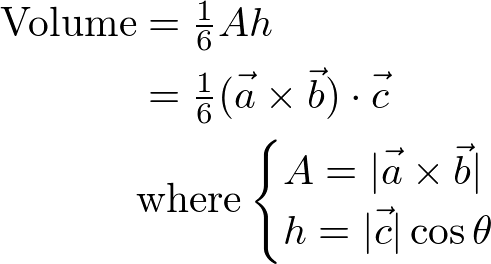
By definition of dot product, ![]() , the volume can be computed with
, the volume can be computed with ![]() . Or, it can be expressed using a matrix determinant notation as well.
. Or, it can be expressed using a matrix determinant notation as well.
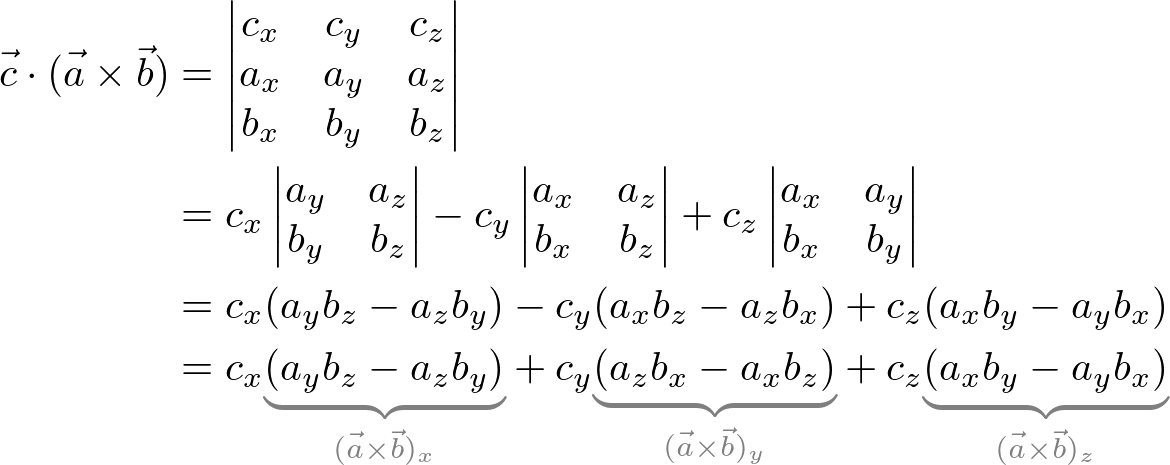
Volume of 3D Geometry
If an arbitrary 3D geomery with closed surface (no holes) is triangulated, the volume of the geometry is the sum of the volumes of all tetrahedrons constructed by triangles. If a geometry consists of N triangles, the total volume is;


Let's visualize the volume calculation using a simple geometry. Suppose there is a unit cube positioned from (0,0,-1) to (1,1,-2). The cube consists of toal 6 faces or 12 triangles. The following diagrams shows the volume of each tetrahedron.
The front face are constructed 2 triangles; (0,0,-1)-(1,1,-1)-(0,1,-1) and (0,0,-1)-(1,0,-1)-(1,1,-1). And, the volumes of the tetrahedrons from the origin are:

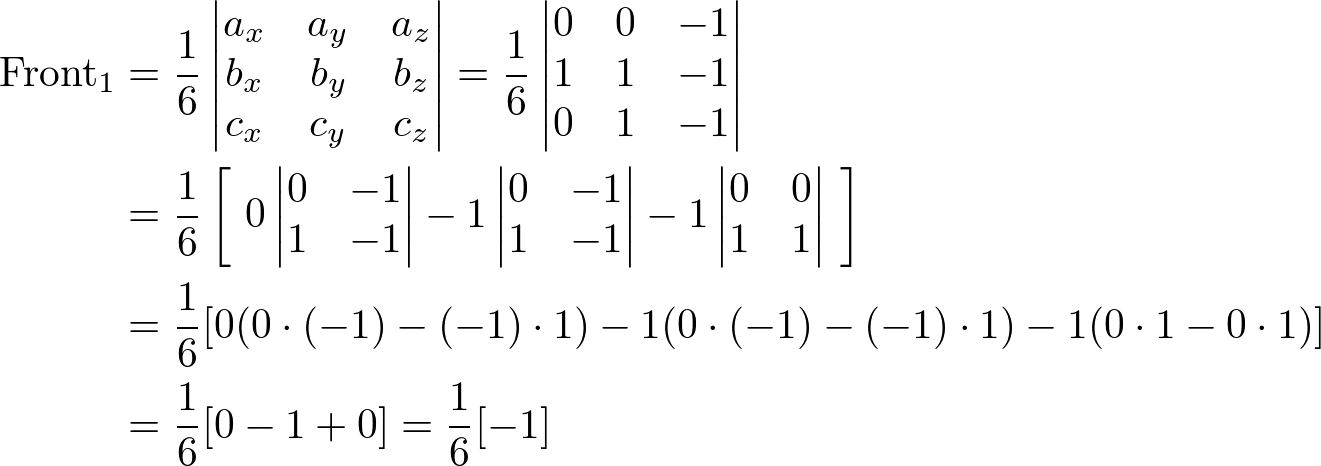

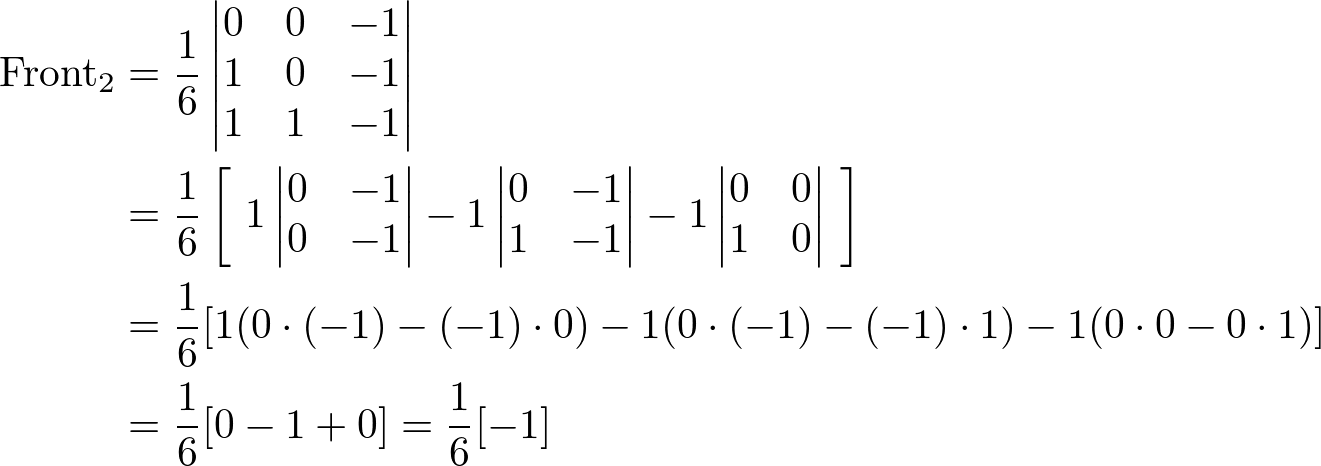
The right-side triangles are defined by (1,1,-1)-(1,0,-1)-(1,1,-2) and (1,0,-1)-(1,0,-2)-(1,1,-2). The volumes of right-side tetrahedrons are:
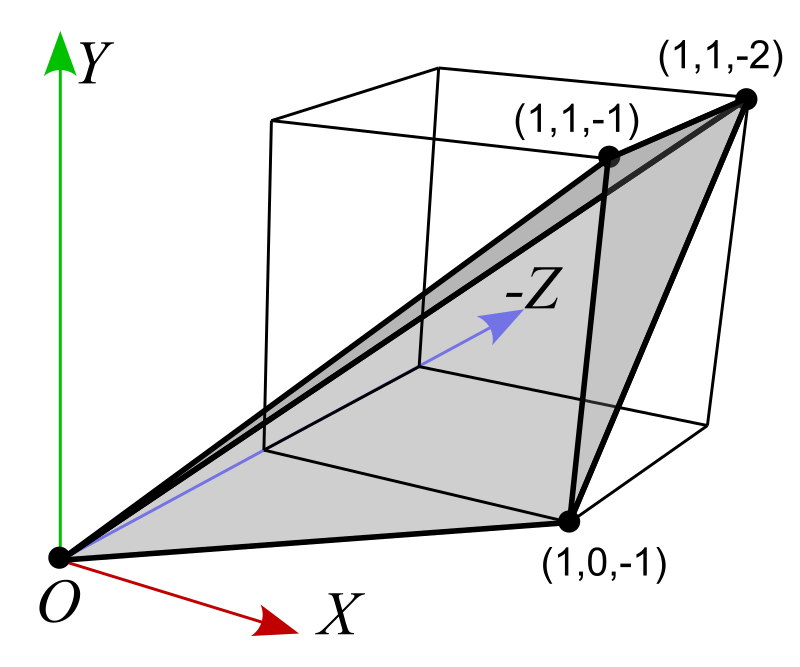



The top triangles are defined by (1,1,-1)-(0,1,-2)-(0,1,-1) and (1,1,-1)-(1,1,-2)-(0,1,-2). The volumes of top-face tetrahedrons are:
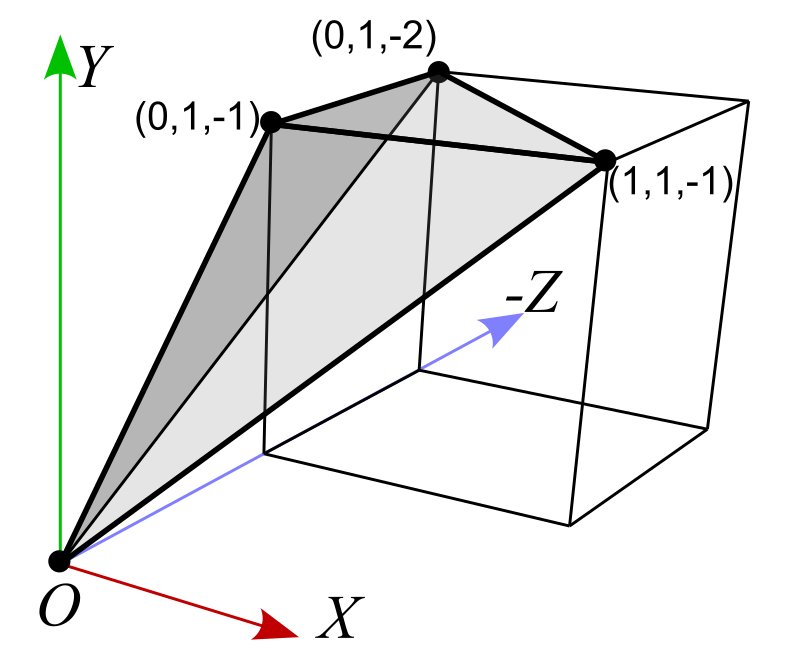

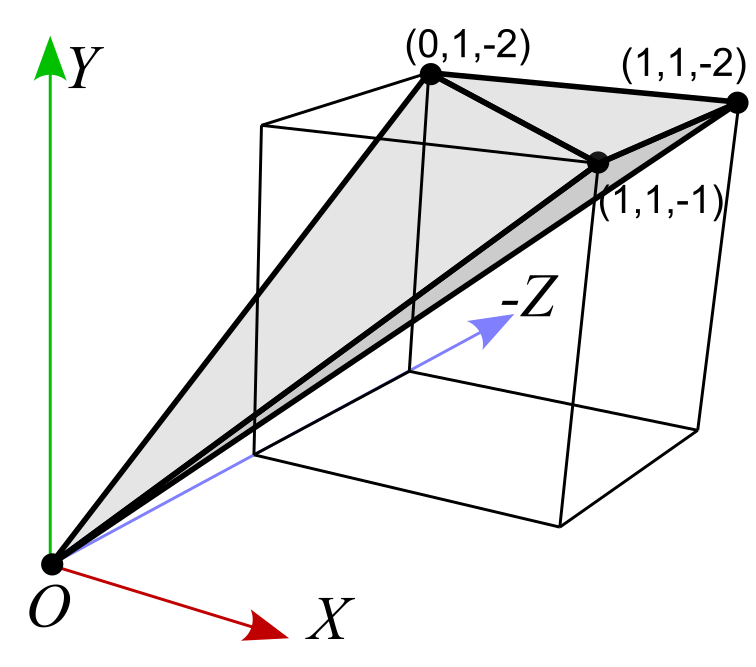
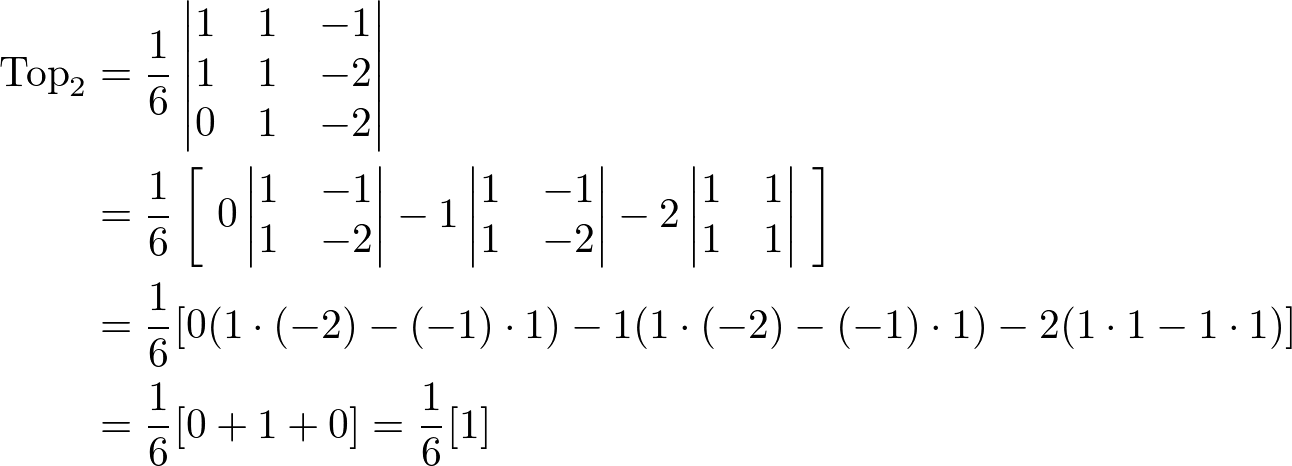
The back-side triangles are defined by (0,1,-2)-(1,0,-2)-(0,0,-2) and (0,1,-2)-(1,1,-2)-(1,0,-2). The volumes of back-face tetrahedrons are:



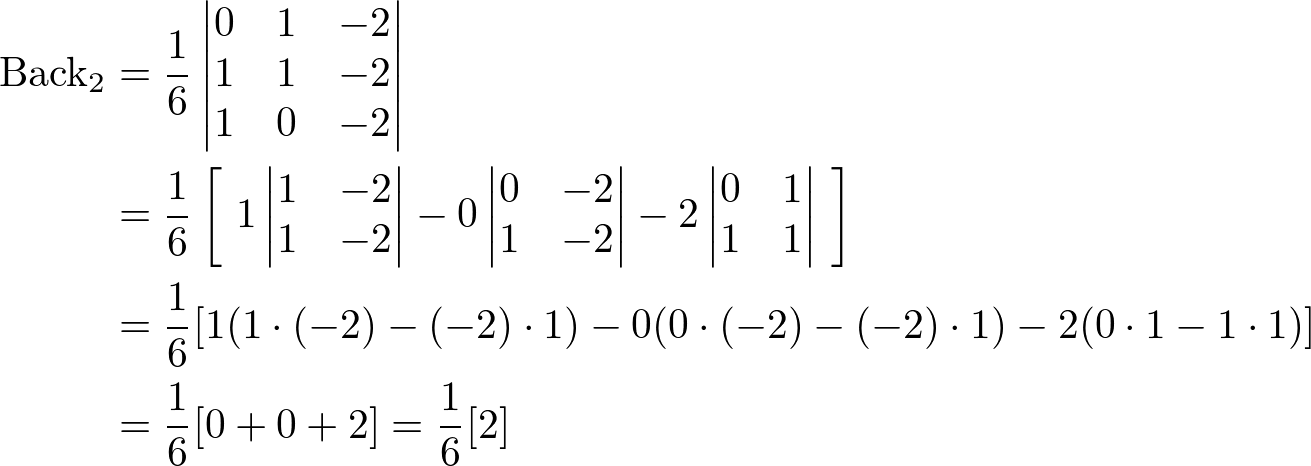
The left and bottom faces are on the same plane (the height of tetrahedron is 0), so the volumes are 0 for these faces.

Therefore, the total volume of the cube is the sum of all tetrahedrons:
![]()
Example: Surface Area & Volume
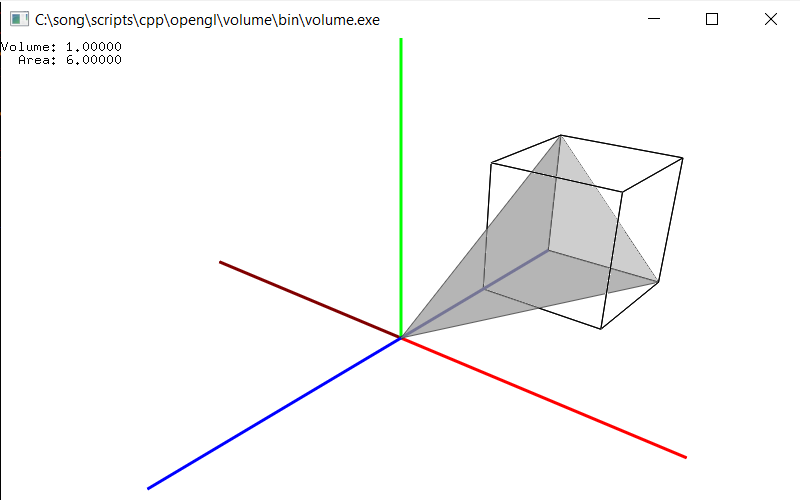

Download: volume.zip
This example loads an OBJ model and calculates the surface are and volume of the OBJ model. And, it visualizes the process of the volume calculations one by one. Please see geomUtils.cpp file ho the surface area and volume are computed.